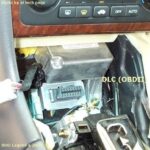If you’re involved in vehicle maintenance, whether as a seasoned mechanic, a fleet manager, or simply a car enthusiast, understanding OBD2 is crucial. OBD2, or On-Board Diagnostics version 2, is a vital system in modern vehicles that monitors and reports on vehicle health. This guide will delve into How Obd2 Works, its components, and why it’s essential for vehicle maintenance and performance. For a quick introduction, you might find our 4-Minute OBD2 Tutorial helpful.
What is OBD2?
OBD2 is essentially a sophisticated health monitoring system for your car or truck. Since its standardization in the mid-1990s, OBD2 has become a universal standard for vehicle diagnostics. Think of it as a doctor constantly checking up on your vehicle’s vital signs. It continuously monitors various systems and components, from the engine and emissions to fuel efficiency and more. When the OBD2 system detects an issue, it illuminates the check engine light (malfunction indicator light – MIL) on your dashboard, signaling that something needs attention.
Alt text: OBD2 system diagram showing sensors collecting data from various vehicle parts, sending information to the ECU for analysis, and triggering a check engine light for detected issues.
The OBD2 system relies on an array of sensors strategically placed throughout the vehicle. These sensors collect data which is then fed to the vehicle’s Engine Control Unit (ECU), often referred to as the car’s brain. The ECU analyzes this data in real-time, comparing it against pre-programmed parameters. If any reading falls outside the acceptable range, indicating a potential malfunction, the OBD2 system logs a diagnostic trouble code (DTC) and, in many cases, activates the check engine light. For example, if an oxygen sensor malfunctions and causes inefficient fuel combustion, the OBD2 system will detect this anomaly and alert you. This early warning system is invaluable for preventing minor issues from escalating into major, costly repairs.
How Does OBD2 Work in Practice?
The core function of OBD2 is to monitor vehicle systems and identify malfunctions. It achieves this by collecting data from various sensors and then reporting issues through diagnostic trouble codes (DTCs). These DTCs are the language OBD2 uses to communicate problems. To access these codes and understand what’s going on with your vehicle, you need an OBD2 scanner or an automotive data logger.
Alt text: Example display of DTC codes P0171 and P0174 on an OBD2 scanner, indicating lean fuel mixture issues in engine banks 1 and 2.
To start the diagnostic process, you connect an OBD2 scanner or telematics device to the OBD2 port in your vehicle. This port is typically located under the dashboard on the driver’s side, though its exact location can vary. Once connected, the diagnostic tool communicates with the car’s computer system via the Controller Area Network (CAN bus). The CAN bus is the communication network within your vehicle that allows different electronic control units to talk to each other. Through this connection, the OBD2 scanner can request and receive DTCs, along with a wealth of other real-time data about your vehicle’s operation.
Find out more about OBD2 port locations in our detailed guide.
OBD2 Compatibility: Is Your Car Equipped?
Wondering if your car is OBD2 compatible? The good news is that for most vehicles manufactured in recent decades, the answer is likely yes. OBD2 compatibility is primarily determined by the model year of your vehicle and the regulations in the country where it was originally sold, not necessarily where it was manufactured.
Alt text: Infographic showing OBD2 compatibility by region and year, highlighting US vehicles from 1996, EU petrol from 2001, and other regions.
As a general rule of thumb:
- USA: If your car is a 1996 model year or newer, it is almost certainly OBD2 compliant. This applies to all gasoline-powered vehicles from 1996 and diesel vehicles from 2004 onwards.
- European Union: Petrol vehicles sold in the EU from 2001 onwards and diesel vehicles from 2004 onwards are typically OBD2 compliant. It’s worth noting that vehicles adhering to stricter emissions standards like “Euro 6” will also be OBD2 compliant.
- Japan: Japanese Domestic Market (JDM) vehicles are generally OBD2 compliant from 2002 onwards. However, imported vehicles may vary, so it’s always best to check with the manufacturer.
- Australia: Most passenger vehicles sold in Australia from 2006 onwards comply with Australian Design Rules (ADR) which incorporate OBD2 standards.
- Canada: Canadian vehicle standards closely align with those in the US. Gasoline vehicles from 1998 onwards are generally OBD2 compliant.
Important Note: This is a simplified guideline. Specific models or manufacturer practices can influence OBD2 compatibility. Always refer to your vehicle’s owner’s manual or consult with a dealership for the most precise information.
| Country of Sale | Model Years Covered | Important Notes |
|---|---|---|
| USA | 1996 and newer | All petrol vehicles from 1996, diesel from 2004. |
| European Union | 2001 and newer (petrol) / 2004 and newer (diesel) | Includes EU member states as of implementation. Check for “Euro 6” standards. |
| Japan | 2002 and newer | JDM vehicles typically compliant from 2002, verify for imports. |
| Australia | 2006 and newer | ADR compliant from 2006 for most passenger vehicles. |
| Canada | 1998 and newer | Gasoline vehicles from 1998 align with US standards. |
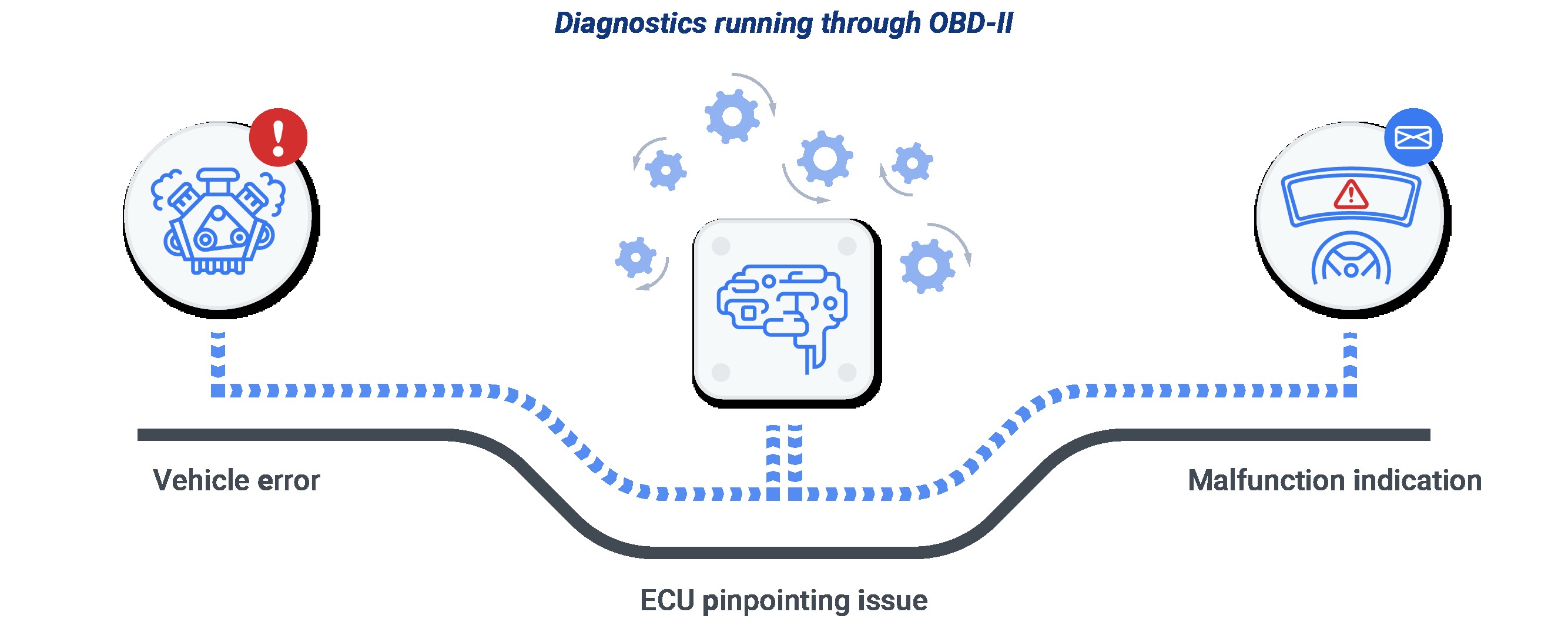

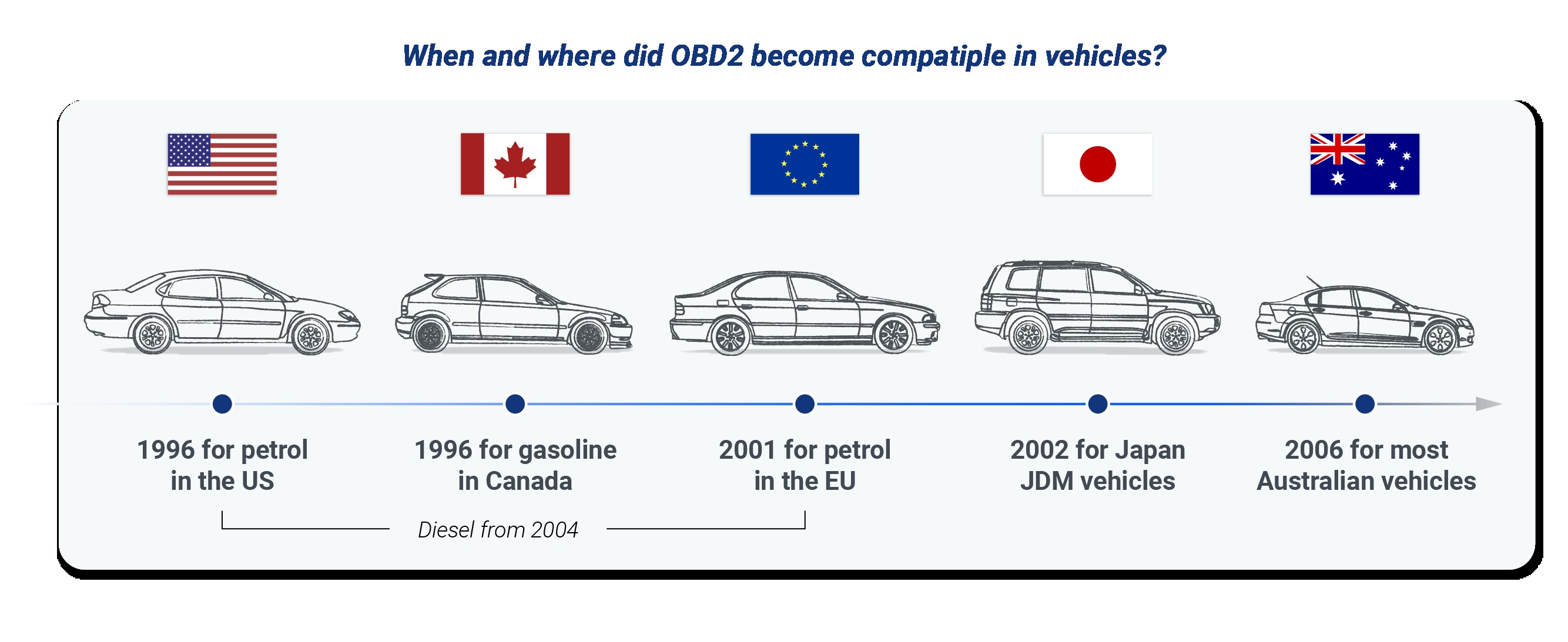
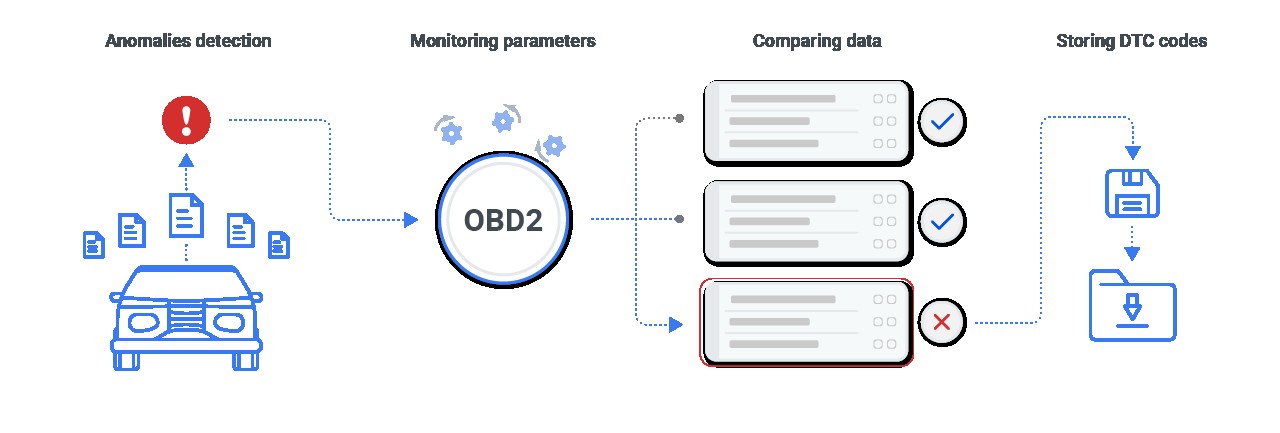

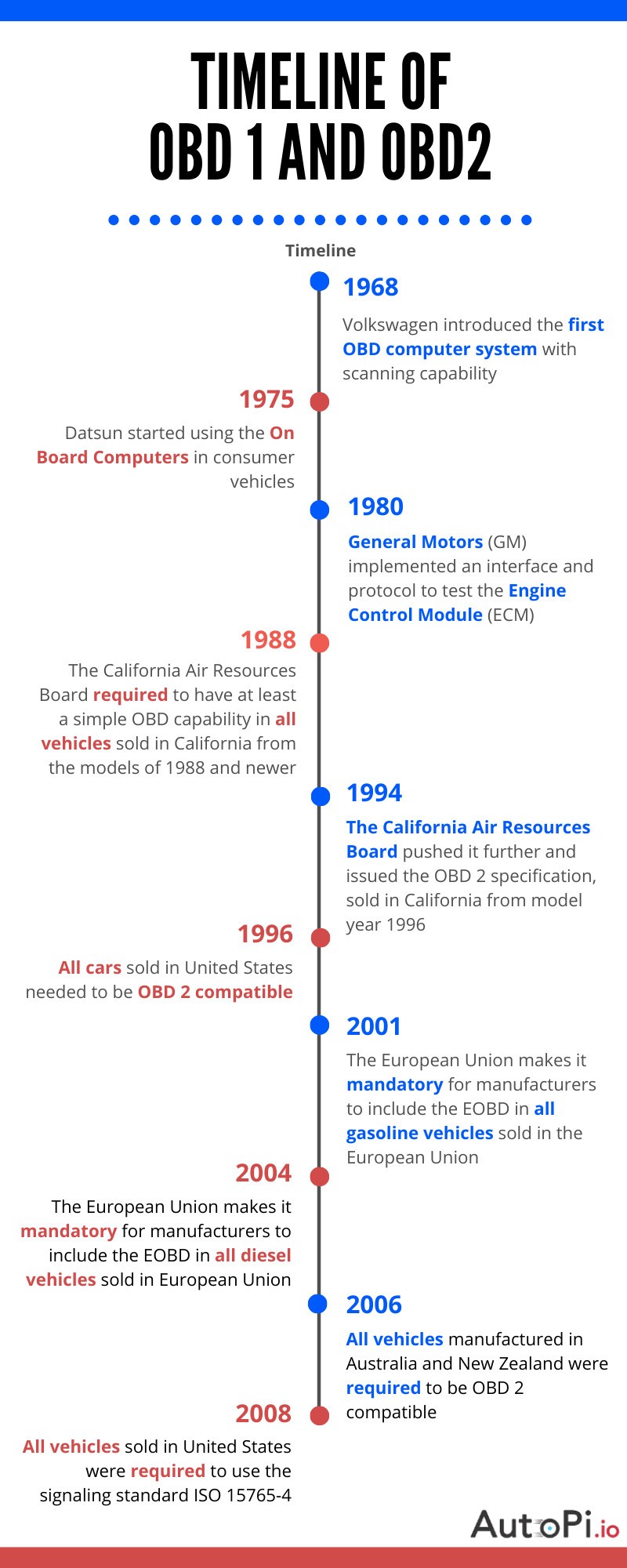
The Role of the OBD2 Scanner
An OBD2 scanner is an indispensable tool for anyone wanting to understand their vehicle’s health. It’s a diagnostic device that connects to your car’s OBD2 port and allows you to communicate with the OBD2 system. With an OBD2 scanner, you can read and clear error codes, monitor real-time vehicle data (like engine temperature, speed, RPM), and assess the performance of various vehicle systems. Understanding how to use an OBD2 scanner effectively is a key skill for proactive vehicle maintenance. By interpreting DTCs correctly, you can address minor issues before they become major problems, saving you time and money on repairs and ensuring your vehicle operates optimally.
Learn more about choosing the right OBD2 scanner for your needs.
Going Beyond Basic Error Codes with Advanced Tools
While basic OBD2 scanners are useful for reading error codes, more advanced tools like the AutoPi CAN FD Pro offer significantly enhanced capabilities for vehicle diagnostics and management.
The AutoPi CAN FD Pro is more than just an OBD2 scanner; it’s a sophisticated telematics device that integrates deeply with your vehicle’s systems. It provides live, detailed data on a wide range of parameters, from fuel economy and engine performance to battery voltage and emissions levels. This level of insight is invaluable for fleet managers needing to monitor vehicle health across a fleet, car enthusiasts wanting in-depth performance data, and anyone who wants to proactively maintain their vehicle. The AutoPi CAN FD Pro connects directly to your car’s CAN bus system and is designed for easy installation.
Instead of just providing generic DTC error codes, the AutoPi CAN FD Pro offers a comprehensive overview of your vehicle’s condition and performance, enabling preventative maintenance and deeper insights.
Explore the features of the AutoPi CAN FD Pro.
OBD2 Data Logging: How it Works
The OBD2 system is constantly logging data as you drive. It continuously monitors a multitude of parameters within the vehicle’s systems. As this data is collected, it’s compared against predefined thresholds and standards.
Alt text: Illustration of OBD2 data logging process, showing continuous monitoring of vehicle parameters, comparison against standards, and storage of DTCs for anomalies.
If the system detects any deviations or anomalies – readings that fall outside the expected range – these are flagged as potential issues. These anomalies are then translated into DTCs, which are stored within the vehicle’s onboard computer, ready to be accessed using diagnostic tools. This data logging capability is crucial for diagnosing intermittent problems that may not be present when a mechanic is inspecting the vehicle.
Learn how to read OBD2 codes and interpret the data.
OBD2 and CAN Bus Connection: The Communication Network
OBD2 and CAN bus are closely related but serve different roles in vehicle diagnostics. OBD2 is the diagnostic protocol – the language used to request and receive diagnostic information. CAN bus is the communication network – the physical pathway through which this information is transmitted within the vehicle. Think of OBD2 as the set of rules for asking questions about vehicle health, and CAN bus as the telephone line that carries those questions and answers.
The OBD2 standard specifies a standardized connector and encompasses five main communication protocols. Notably, the CAN bus protocol has been a mandatory part of the OBD2 standard for all vehicles sold in the US since 1996. By 2001, OBD2 compliance became mandatory for all cars in Europe, followed by Australia and New Zealand in 2006.
Understanding the Five OBD2 Signal Protocols
While OBD2 is a standard, it actually encompasses five different communication protocols. These protocols are like different dialects of the same language, each with its own nuances. Choosing the correct protocol is essential for ensuring that your diagnostic tool can effectively communicate with your vehicle’s computer system.
Alt text: Graphic depicting five OBD2 protocol icons – SAE J1850 PWM, SAE J1850 VPW, ISO 9141-2, ISO 14230 KWP2000, and ISO 15765 CAN, representing different communication dialects.
The existence of multiple protocols is due to the evolution of automotive technology and the varying preferences of different manufacturers over time. Here’s a brief overview of each of the five main OBD2 protocols:
SAE J1850 PWM
Primarily used by Ford, SAE J1850 PWM (Pulse Width Modulation) operates at 41.6 kbps. It uses pulse width modulation for reliable data transmission.
| Feature | Description |
|---|---|
| SAE J1850 PWM (Ford) | Bus +: Pin 2, Bus -: Pin 10, 12V: Pin 16, GND: Pins 4, 5, State: Active when BUS + HIGH, BUS – LOW, Voltage: Max 5V, Min 0V, Bytes: 12, Bit Timing: ‘1’ bit – 8uS, ‘0’ bit – 16uS, Start of Frame – 48uS |
SAE J1850 VPW
Favored by General Motors, SAE J1850 VPW (Variable Pulse Width) operates at 10.4/31.6 kbps. It uses variable pulse width for data exchange.
| Feature | Description |
|---|---|
| SAE J1850 VPW (GM) | Bus +: Pin 2, 12V: Pin 16, GND: Pins 4, 5, State: Idles low, Voltage: Max +7V, Decision +3.5V, Min 0V, Bytes: 12, Bit Timing: ‘1’ bit – HIGH 64uS, ‘0’ bit – HIGH 128uS, Start of Frame – HIGH 200uS |
ISO 9141-2
Used by Chrysler, European, and Asian vehicles, ISO 9141-2 facilitates asynchronous serial communication at 10.4 kbps, similar to RS-232.
| Feature | Description |
|---|---|
| ISO 9141-2 (Chrysler, Euro, Asian) | K Line: Pin 7, L Line (optional): Pin 15, 12V: Pin 16, GND: Pins 4, 5, State: K Line idles HIGH, active when LOW, Voltage: Max +12V, Min 0V, Bytes: Message 260, Data 255, Bit Timing: UART 10400bps, 8-N-1 |
ISO 14230 KWP2000
Also known as Keyword Protocol 2000, ISO 14230 KWP2000 extends ISO 9141-2, offering speeds up to 10.4 kbps and broad diagnostic capabilities, particularly in Chrysler, European, and Asian models.
| Feature | Description |
|---|---|
| ISO 14230 KWP2000 (Chrysler, Euro, Asian) | K Line: Pin 7, L Line (optional): Pin 15, 12V: Pin 16, GND: Pins 4, 5, State: Active when LOW, Voltage: Max +12V, Min 0V, Bytes: Data 255, Bit Timing: UART 10400bps, 8-N-1 |
ISO 15765 CAN
The modern standard, ISO 15765 CAN (Controller Area Network), is mandatory for all vehicles sold in the US from 2008 onwards. It operates at 250 kbit/s or 500 kbit/s, utilizing the CAN bus for high-speed communication.
| Feature | Description |
|---|---|
| ISO 15765 CAN (US 2008+, Euro 2003+) | CAN HIGH (H): Pin 6, CAN LOW (L): Pin 14, 12V: Pin 16, GND: Pins 4, 5, State: Active CANH HIGH, CANL LOW, Idle floating, Voltage: CANH Max +4.5V, Min +2.75V; CANL Max +2.25V, Min +0.5V, Bit Timing: 250kbit/sec or 500kbit/sec |
The OBD2 Timeline: Key Milestones
Alt text: OBD2 timeline infographic highlighting key dates like 1960s OBD development, 1990s OBD1, 1996 OBD2 standardization in US, 2001 in EU, and 2008 CAN protocol mandate in US.
Understanding the timeline of OBD development helps appreciate the advancements in vehicle diagnostics:
- 1960s: Initial development of On-Board Diagnostics systems.
- Early 1990s: OBD1 systems introduced, offering basic, manufacturer-specific diagnostics primarily for emissions control.
- 1996: OBD2 mandated in the USA, standardizing diagnostics and expanding monitoring capabilities.
- 2001-2004: OBD2 adoption becomes widespread in Europe and other regions.
- 2008: CAN bus protocol becomes mandatory for OBD2 in the US, signifying a move towards higher-speed, more robust communication.
OBD 1 vs OBD 2: Key Differences
On-Board Diagnostics systems have come a long way since their inception. OBD1, used in the early 1990s, offered basic diagnostics, but it was manufacturer-specific and primarily focused on emissions. OBD2, mandated from 1996 onwards, represents a significant leap forward. It is a standardized, comprehensive system that monitors a much broader range of vehicle functions.
OBD2 offers several key advantages over OBD1:
- Standardization: OBD2 is standardized across all manufacturers, ensuring compatibility of diagnostic tools.
- Enhanced Data: OBD2 tracks a wider array of sensor data, providing more detailed insights into vehicle operation.
- Fault Code Storage: OBD2 systems can store fault codes even for intermittent issues, aiding in diagnosing elusive problems.
- Real-time Troubleshooting: OBD2 facilitates more precise real-time troubleshooting, leading to quicker and more accurate repairs.
The benefits of OBD systems in general, and OBD2 in particular, include improved fuel efficiency, early detection of malfunctions, cost savings through proactive maintenance, ensuring compliance with emission control regulations, and ultimately enhancing vehicle safety and reliability. As technology continues to advance, OBD systems will likely integrate even more sophisticated features for even better vehicle diagnostics and management.
Maximizing Your Vehicle Performance with OBD2
For developers, fleet managers, and vehicle owners alike, understanding and utilizing OBD2 technology is paramount for maintaining optimal vehicle health and performance. OBD2 systems provide a wealth of diagnostic information, enabling early detection of potential issues and proactive maintenance. By leveraging OBD2, you can improve fuel economy, ensure emissions compliance, and enhance overall vehicle safety and longevity. With the aid of OBD2 scanners and advanced vehicle telematics devices, diagnosing and resolving vehicle problems becomes more efficient and effective, ultimately saving you money and extending the lifespan of your vehicles. Embrace OBD2 technology to keep your vehicles running smoothly and reliably for years to come.
Take Action Now and Explore OBD2
Ready to take control of your vehicle’s health? Explore our comprehensive range of OBD2 tools and resources to keep your vehicles in peak condition. Discover more about our advanced OBD2 devices, watch our informative 4-minute OBD2 tutorial, and start harnessing the power of OBD2 technology today!
